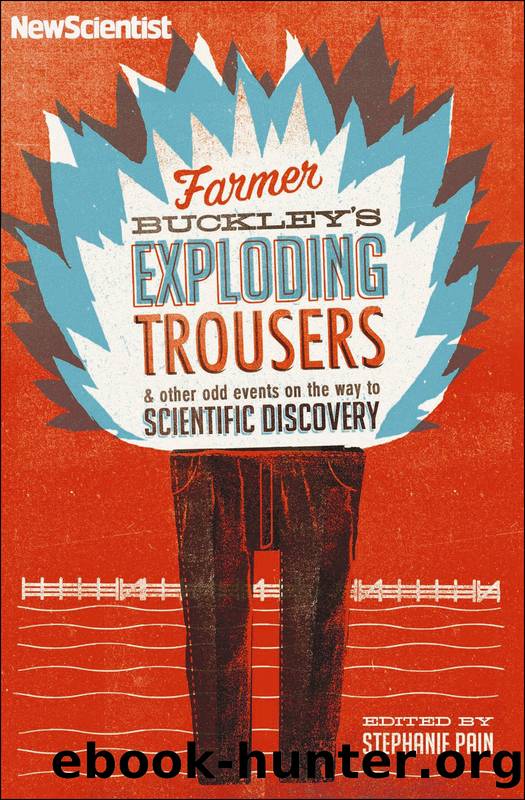Farmer Buckley's Exploding Trousers by Stephanie Pain

Author:Stephanie Pain
Language: eng
Format: epub
Publisher: Profile Books
Published: 2011-03-15T00:00:00+00:00
Night of the mosquito hunters
If there are 250,000 bats in a colony and each one eats 3,375 mosquitoes in a night, how long will it take the bats to rid one Texan swamp of malaria? Charles Campbell, a doctor in San Antonio, did the sums and was convinced that bats could consume enough mosquitoes to eradicate the disease from the swamplands around the city. But how could he persuade some of the millions of bats that flew in from Mexico each spring to settle where the mosquitoes were worst? Campbellâs answer was the bat tower, a high-rise home to tempt even the most discerning bat. And not only would the towerâs tenants transform the malarial mires into wholesome and habitable land, they would provide a steady income. Bat guano was a highly prized fertiliser, and if one bat produced 40 grams of guano a year, then a quarter of a million bats â¦
It seemed so simple. Mosquitoes spread malaria. Bats eat mosquitoes. Set the bats on the mosquitoes and the disease would disappear. Charles Campbell knew about malaria: he was a doctor. He also knew about bats, which he studied in his spare time. There was no doubt that they ate mosquitoes, and lots of them. He had poked through countless pellets of bat guano and totted up the fragments of wings, legs and other indigestible bits to come up with an estimated nightly toll.
At the turn of the 20th century, malaria was still rife in Americaâs southern states. Each year, there were hundreds of thousands of cases, costing the nation around $250 million. But while parts of Texas were plagued by mosquitoes, the state was also home to huge populations of bats. Late each February, a hundred million Mexican free-tailed bats fly north from Mexico to central Texas, forming immense colonies in caves, old barns and derelict buildings. Campbellâs plan was to install bats in purpose-built roosts close to places where mosquitoes bred.
In 1902, Campbell lined some wooden boxes with guano-coated cheesecloth and fixed them in old buildings, under country bridges, and in trees near a cave where millions of bats roosted. After five years and no bats, Campbell conceded that the boxes were a dismal failure. Bats, he deduced, preferred larger homes.
Within months he had built a 10-metre tower at the local experimental farm. It cost him $500. Inside were sloping shelves for the bats to cling to, a large heap of guano to make them feel at home and âthree perfectly good hams with a nice slice cut out of the side of each, exhibiting their splendid quality for the delectation of the intended guestsâ. But there were no guests. Eventually Campbell resorted to kidnap, capturing 500 bats and incarcerating them in the tower, hoping their squeaks would attract others. By 1910, it was clear that bats were never going to move in. He dismantled the tower and sold the timber for $45.
Disappointed, Campbell left his practice and headed for the wilds of Texas to learn more about bats.
Download
This site does not store any files on its server. We only index and link to content provided by other sites. Please contact the content providers to delete copyright contents if any and email us, we'll remove relevant links or contents immediately.
Hands-On Genetic Algorithms with Python by Eyal Wirsansky (2020) by Unknown(4085)
Thing Explainer by Randall Munroe(3909)
The Elements by Theodore Gray(3025)
The Meaning of it All by Richard Feynman(2318)
Make by Mike Westerfield(2303)
Every Tool's a Hammer by Adam Savage(1913)
Science Experiments You Can Eat by Vicki Cobb(1855)
The Perfectionists by Sara Shepard(1803)
Martin Gardner's Science Magic by Martin Gardner(1707)
Raspberry Pi Electronics Projects for the Evil Genius (Tab) by Norris Donald & Norris Donald(1687)
Elephants on Acid by Boese Alex(1578)
Elephants on Acid: And Other Bizarre Experiments by Alex Boese(1575)
The Perfectionists by Simon Winchester(1572)
Handbook of Modern Sensors by Jacob Fraden(1559)
Synchrotron Light Sources and Free-Electron Lasers by Eberhard J. Jaeschke Shaukat Khan Jochen R. Schneider & Jerome B. Hastings(1537)
Tesla by Carlson W. Bernard(1502)
The Science of Food by Marty Jopson(1463)
125 Physics Projects for the Evil Genius by Silver Jerry(1430)
The Meaning Of It All by Richard P. Feynman(1430)
